I’ve seen what happens when a trailer doesn’t fit. A mining site had to delay operations by 2 days. The trailer they chose couldn’t handle the height of the machinery.
That mistake could’ve been avoided with one thing: knowing the actual dimensions of the trailer before loading day.
I’ve worked with trailer buyers, logistics teams, and construction managers. I’ve seen how trailer size affects everything—from cargo safety to legal routes.
In this article, you’ll learn the standard and custom sizes of semi-trailers—plus how to use those numbers to match your cargo, route, and job requirements.
By the end, you’ll be able to make the right call.
So let’s get started!
1. What Is a Semi Trailer?
I still remember the first time I saw a semi trailer unhooked. I expected it to stand—but the front end dropped straight to the ground. That’s when I learned a semi trailer has no front axle.
It depends on a truck to support and move it. They connect using a fifth-wheel coupling. You’ll see semi trailers in mining, farming, construction, and retail—built to haul everything from machines to food.
Why Size Matters
I once worked with a team trying to deliver equipment to a site. The trailer made it through the yard entrance—but it couldn’t turn the corner to the dock. The job stalled for hours.
Size plays a big role in how well a trailer works for your needs. It affects:
- What kind of cargo you can carry
- Which roads and bridges you can legally use
- Whether you’ll fit at a warehouse or loading dock
If you pick the wrong size, it can cause delays, damage, or fines.
If you get it right, everything flows.
That’s why understanding trailer size isn’t just useful—it’s part of the job.
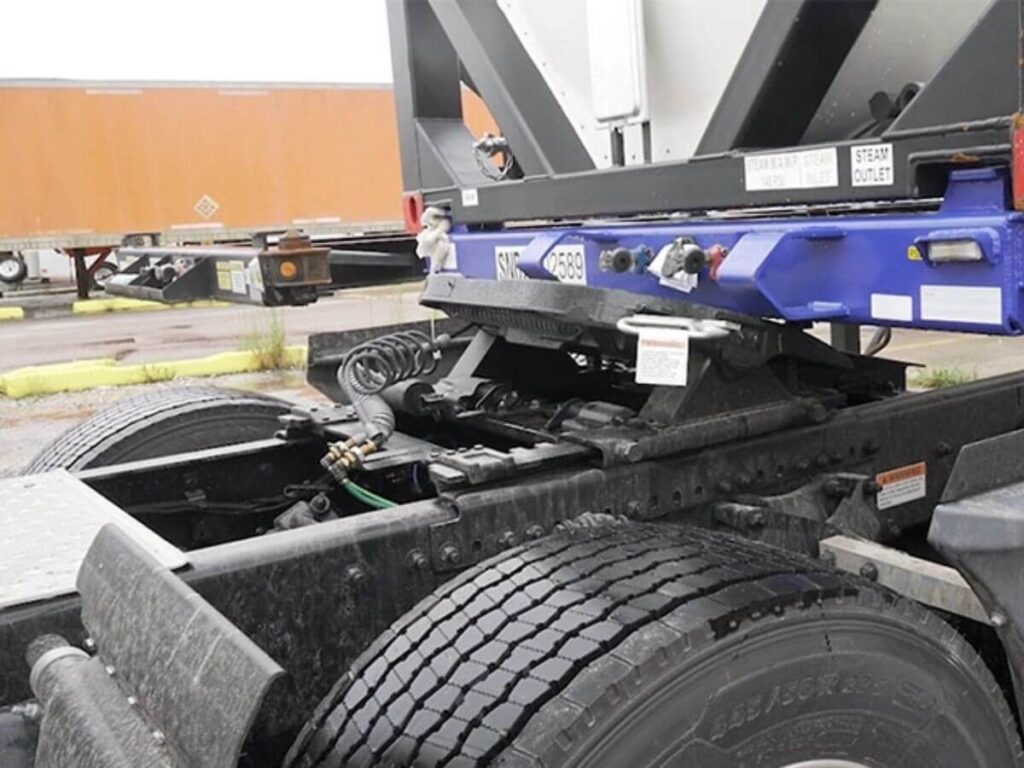
2. Standard Semi Trailer Dimensions
I once had a client in retail who ordered a load of seasonal goods—only to find that the trailer was a few inches too short for their warehouse lift system. A simple detail caused a full-day delay.
That’s why knowing standard trailer sizes matters.
U.S. and Global Averages (Dry Van)
Most dry van trailers—the ones used to carry boxed goods—follow set standards.
Here’s what you’re likely to see:
- Length: 48 feet or 53 feet
- Width: 8.5 feet (or 102 inches)
- Exterior height: Up to 13.5 feet from the ground
- Interior height: Around 110 inches
These sizes aren’t just random. They’re built to fit within most U.S. highway limits and match up with standard loading docks.
Outside the U.S., trailer dimensions are often close, but they can vary. In Europe, for example, the maximum trailer length is usually about 13.6 meters (44.6 feet), and the height can be slightly lower due to different road laws.
Weight Capacity
Have you ever overloaded a trailer without realizing it? I’ve seen it happen on a farm—too much grain, not enough space. The truck looked fine, but it couldn’t move without straining the axles.
For a 53-foot trailer, the typical weight limit is around 45,000 pounds, or 20,412 kilograms.
That weight includes cargo, packaging, and pallets. Go over that, and you risk fines or damaged suspension.
This is key across industries:
- Logistics: Stay road legal and protect goods
- Agriculture: Match loads to harvest volume
- Retail: Maximize delivery efficiency
Before you plan your next load, check the numbers. A few inches or a few hundred pounds can make or break your delivery.
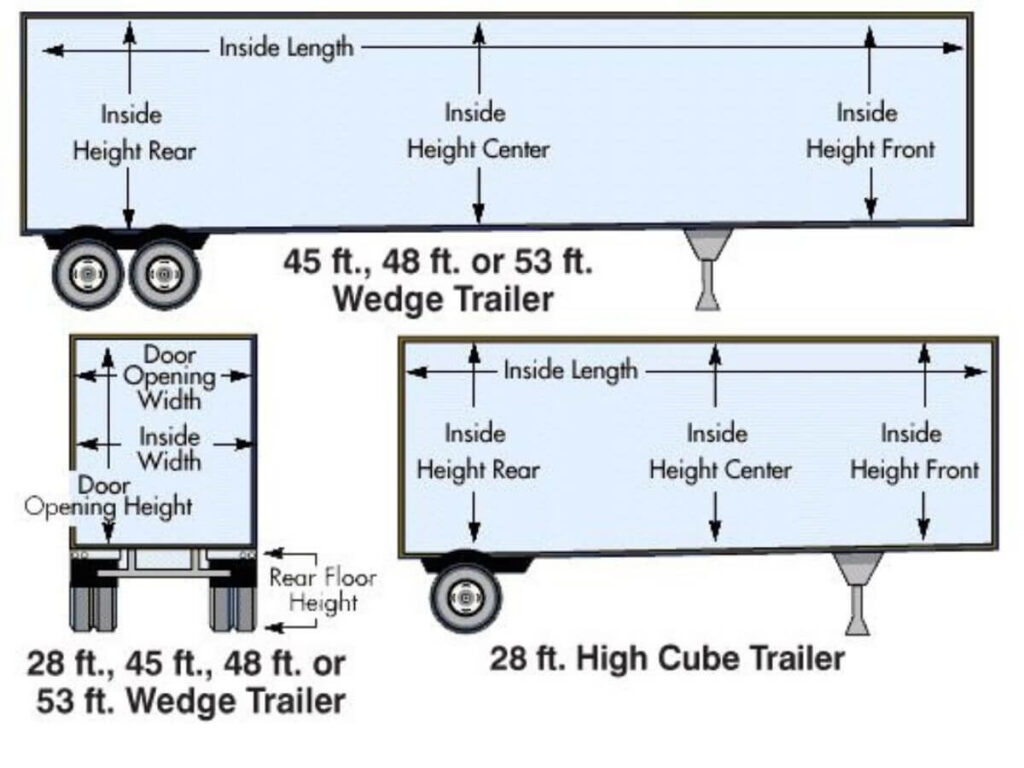
3. Common Semi Trailer Sizes by Type
I once stood on a job site with a construction manager who looked at the trailer we ordered and shook his head. “We’re going to need a flatbed,” he said. “This thing won’t clear the crane.”
That moment taught me something: size doesn’t just matter—it depends on the job.
Here’s how different trailer types measure up, and where they fit best.
Flatbed Trailers
- Length: 48–53 ft
- Width: 8.5 ft
- Max Load Height: 8.5 ft
Used for:
- Construction materials (steel, lumber)
- Large equipment
- Industrial tanks or pipes
Flatbeds are open with no walls or roof. That gives you flexibility—but you’ll need to secure the load yourself. Great for crane loading or odd-shaped cargo.
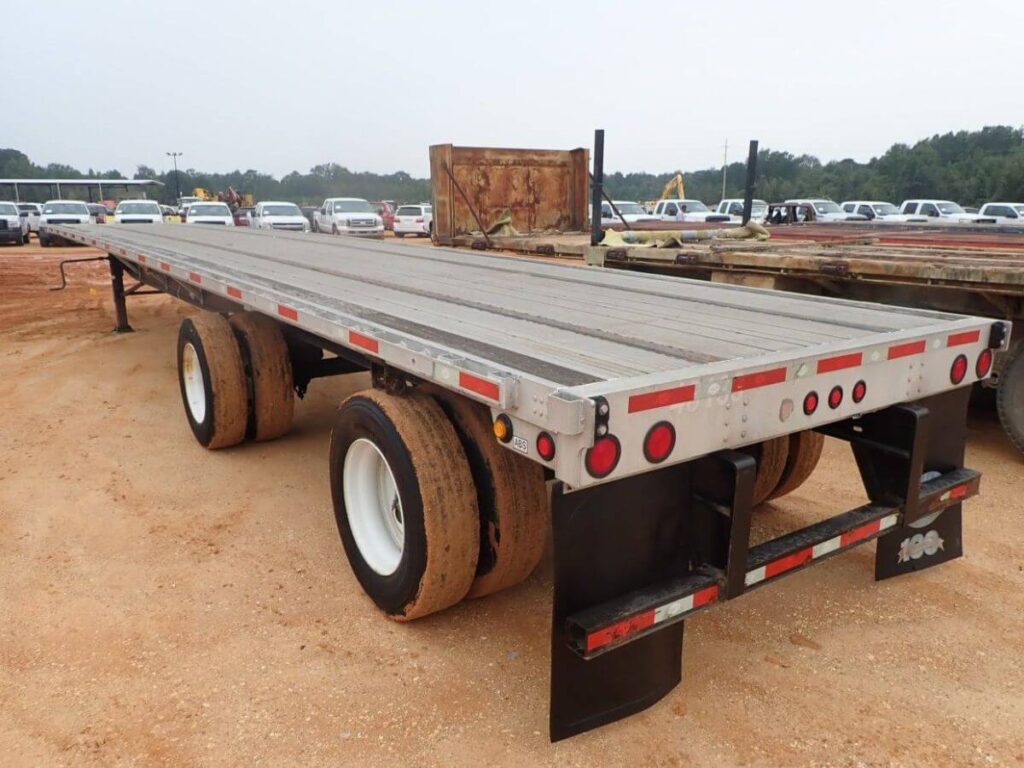
Low-Bed (Lowboy) Trailers
- Deck Length: 24–29 ft
- Height Clearance: Up to 11.5 ft
Ideal for:
- Excavators
- Wind turbine components
- Mining and road equipment
I once helped a mining contractor pick a trailer. His words stuck with me: “If it sits high, it rides low.” Lowboys keep tall cargo under legal bridge height.
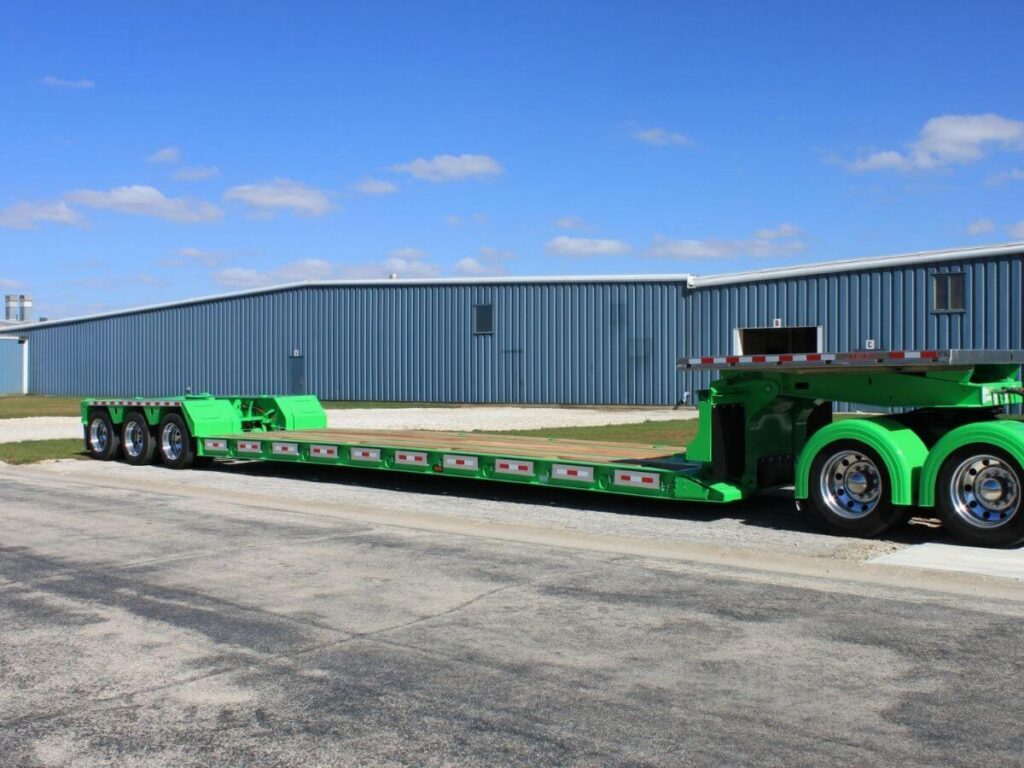
Dump Trailers
- Length: 28–40 ft
- Capacity: 20–30 cubic yards
Used for:
- Sand and gravel
- Soil and demolition waste
- Mining byproducts
You’ll see these on job sites daily. They’re built to tilt and dump fast, which saves time and labor.
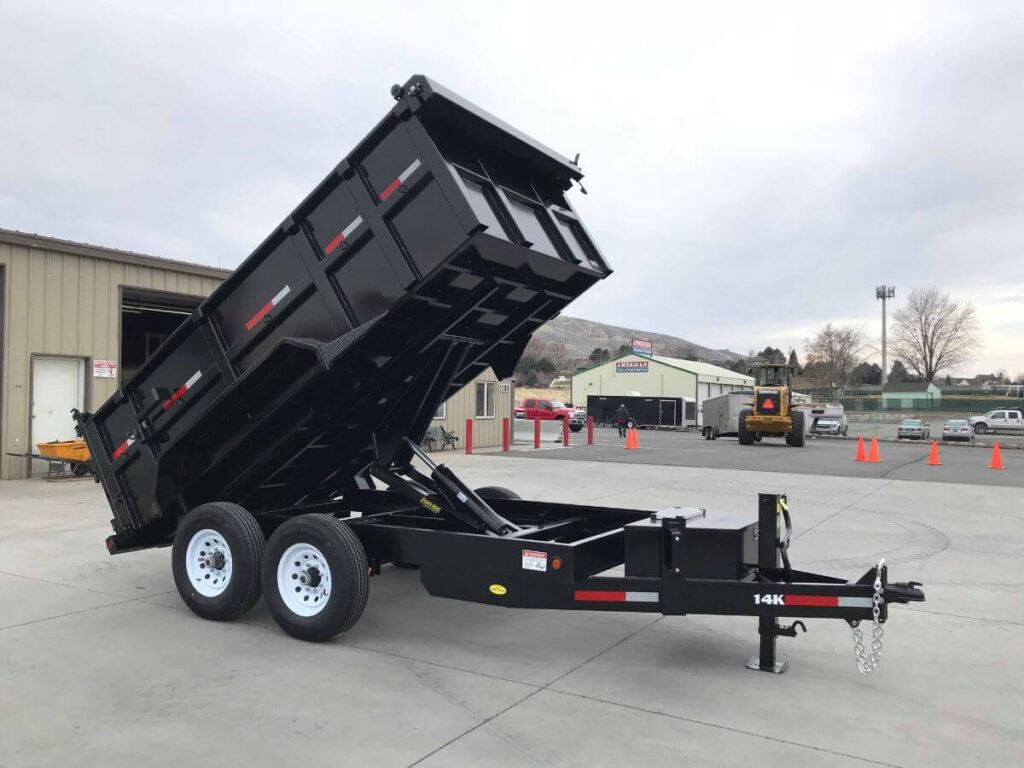
Tanker Trailers
- Length: 40–53 ft
- Volume: 5,000–11,600 gallons
Common in:
- Oil and gas
- Chemicals
- Agricultural liquids (milk, fertilizer)
A dairy client once told me, “If it’s liquid, we tank it.” Just make sure to check for proper linings and baffles, especially for chemicals.
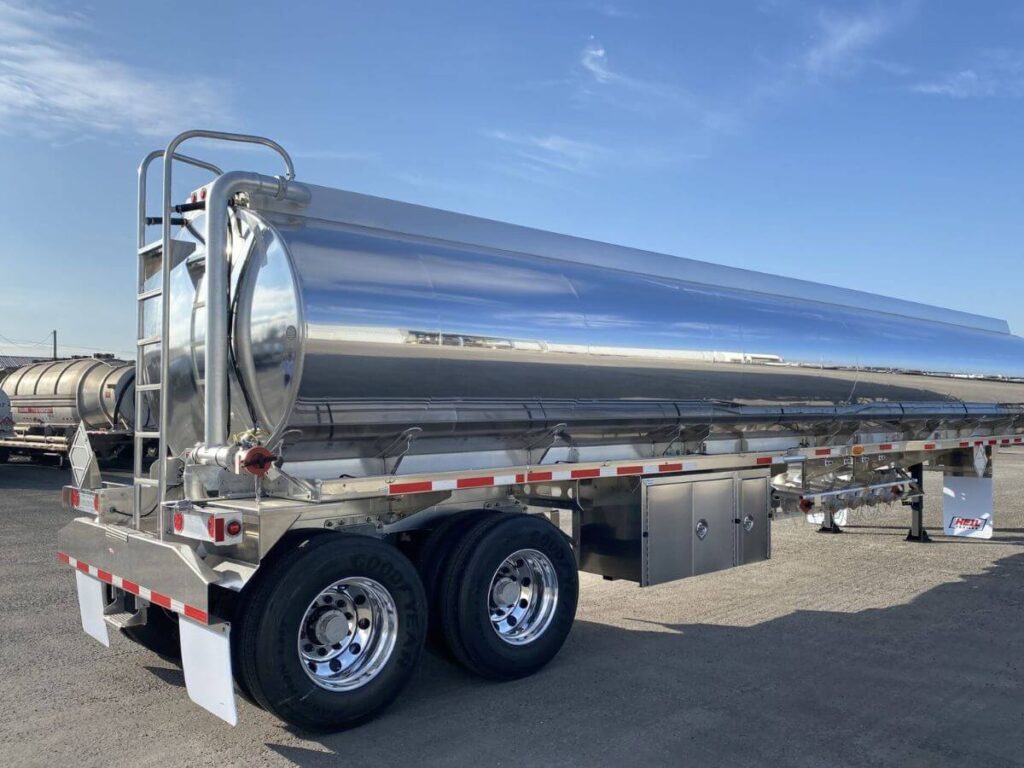
Refrigerated (Reefer) Trailers
- Length: 48–53 ft
- Interior Height: Around 8.5 ft
Needed for:
- Fresh produce
- Frozen meats
- Medical shipments
Reefers come with built-in cooling units. If you’re in food or pharma, you’ll probably use one regularly.
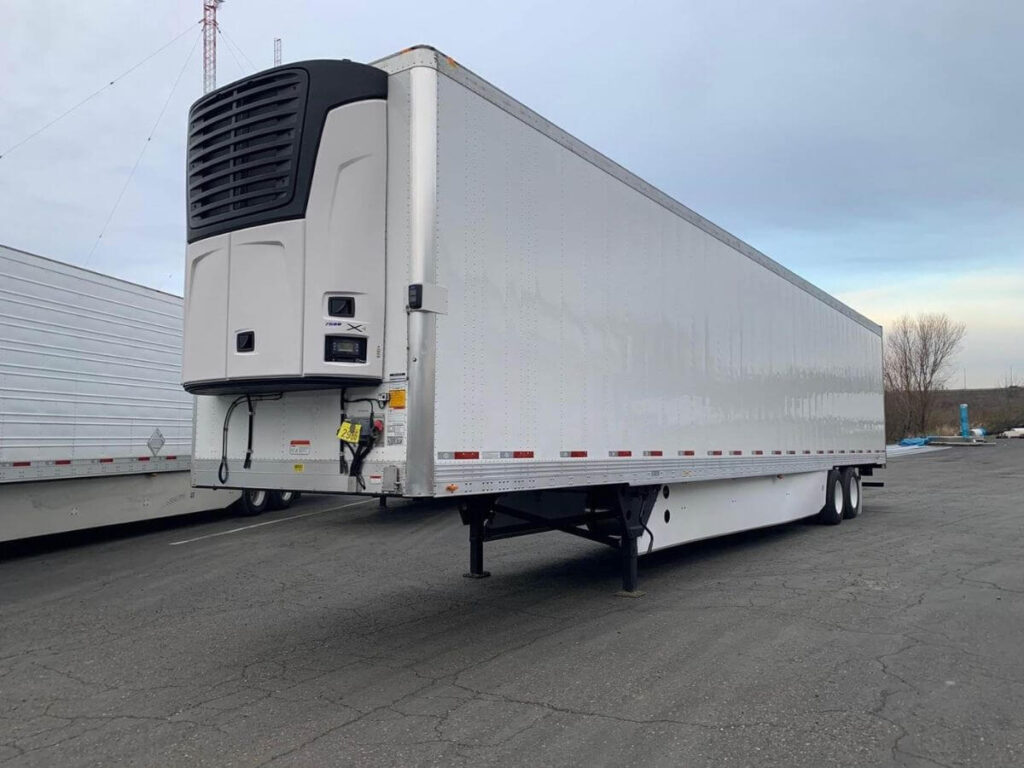
Fence and Warehouse Trailers
- Length: 40–53 ft
- Side Wall Height: 1.2m to 2.5m
Used for:
- Livestock
- Bulk produce
- Retail shipments
These are often open-sided or have cage-style walls. A farm supplier once told me, “It’s the only way my onions ride.”
Each trailer type solves a different problem. The better you know your load, the easier it is to match it with the right trailer size.
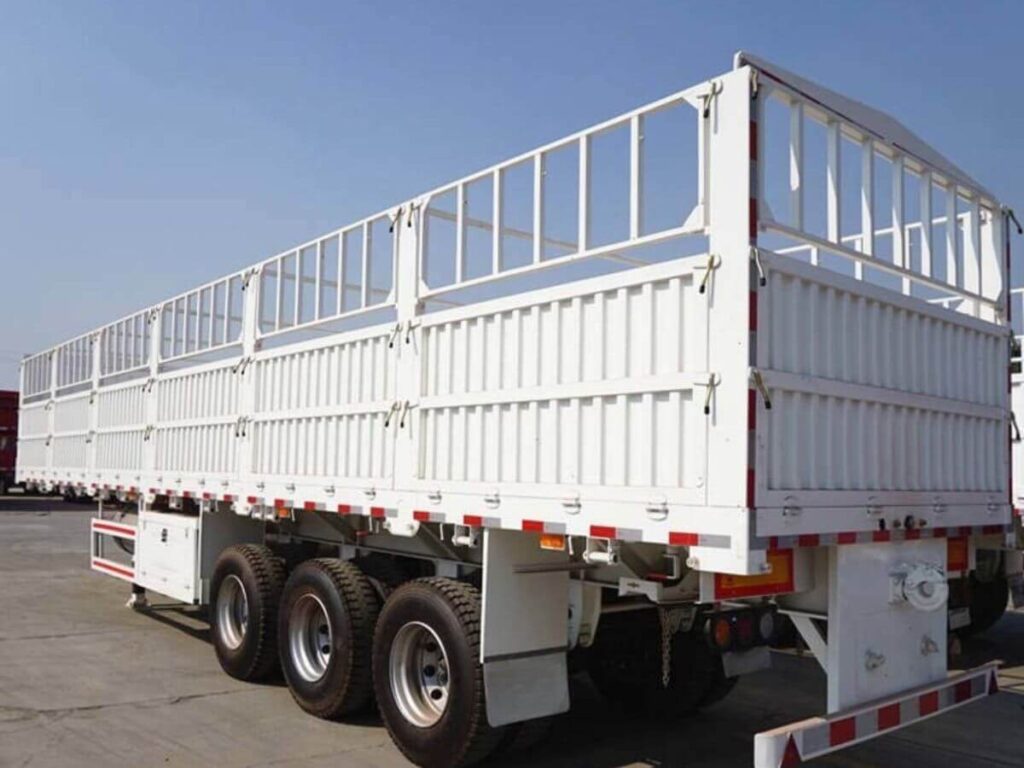
4. Size Regulations by Country
I’ve seen what happens when someone skips the size check. One shipment I worked on got stuck at a checkpoint—all because the trailer was too long for that country’s rules. The delay? Two days. The cost? Thousands.
If you’re moving cargo across borders, you need to know the size limits where you’re going. Every country has its own rules—and ignoring them can shut your job down.
Legal Limits
Here’s what you need to know:
United States
- Max length: 53 feet
- Max width: 102 inches
- Max height: 13.5 feet
These are the standard federal limits. But some states may have local rules, especially for bridge clearances or city deliveries.
Europe
- Trailer length: About 52.5 feet (16 meters)
- Width: 2.55 meters (100.4 inches)
- Height: 4 meters (13.1 feet)
If you’re hauling through Europe, the roads can be tight. You’ll want to double-check your route for tunnel and road width limits. (European Commission Transport)
Australia
If you’re hauling in rural Australia, you’ll likely deal with B-doubles or road trains.
- B-doubles: Up to 25 meters (82 feet)
- Road trains: Can go over 50 meters (164 feet)
These setups need special permits and can only run on approved roads.
China
In China, the national standard (GB 1589-2016) sets clear limits:
- Max length: 17.1 meters (56.1 feet)
- Max width: 2.55 meters
- Max height: 4 meters
Planning to transport across provinces? You’ll want to make sure your trailer fits within these limits to avoid penalties.
India and Southeast Asia
In these areas, you’ll see shorter trailers—usually around 40 feet. Narrower roads and older infrastructure make longer setups harder to manage.
When Do You Need an Oversize Permit?
If your trailer or cargo goes over the legal limit—by height, width, or length—you’ll need a special permit.
This often applies if you work in:
- Mining
- Heavy equipment transport
- Renewable energy (like wind turbine parts)
You might also need escort vehicles or be restricted to certain hours or roads.
Skipping the permit process can lead to:
- Delays
- Fines
- Even being turned around
So before you roll out, ask yourself: Does this trailer meet the rules where I’m headed?
If the answer’s no, it’s better to handle it now than deal with trouble later.
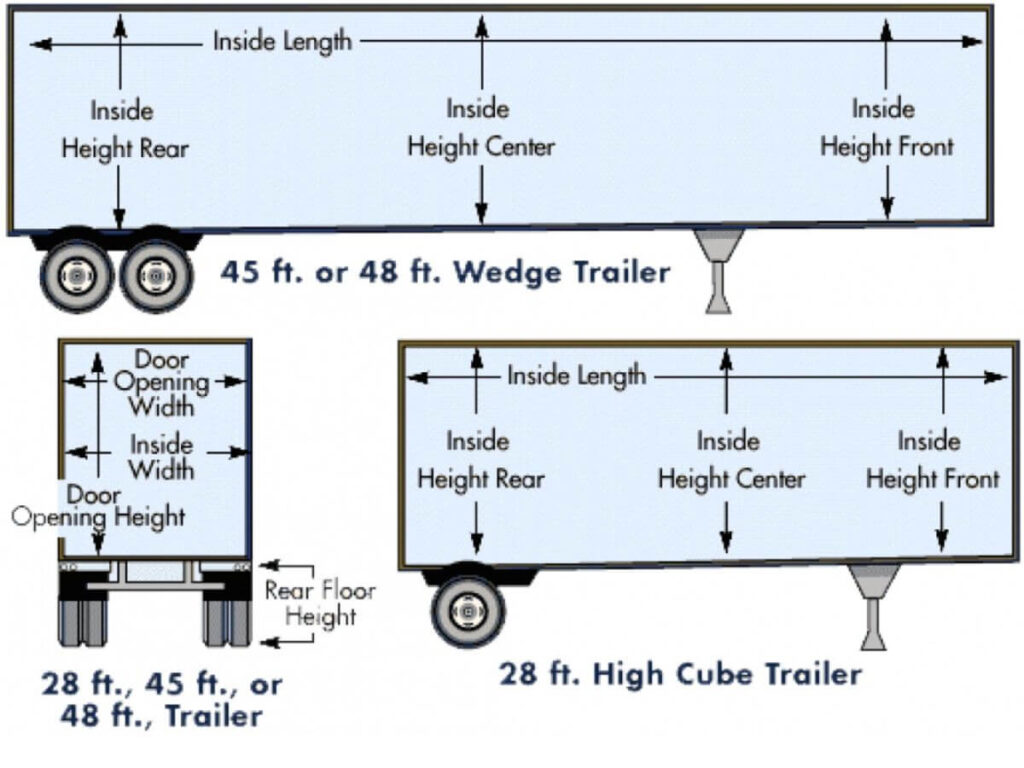
5. Custom vs Standard Sizes
If you’ve ever tried to force a load onto the wrong trailer, you know how frustrating it can be. Maybe you’ve had to shift cargo, adjust straps, or even cancel a delivery. I’ve been there too.
You might be wondering—should you stick with a standard trailer or invest in a custom build?
The answer depends on what you haul, how often, and where you’re going. To help you figure it out, here’s a side-by-side comparison:
| Factor | Standard Trailer | Custom Trailer |
| Best for | General freight, retailers, cross-border carriers | Construction, mining, agriculture, energy industries |
| Size | 48–53 ft long, 102 in wide, ~13.5 ft high | Built to your load (extra long, tall, wide, or low deck) |
| Legal Fit | Compliant in most regions—no permits needed | May require permits, escorts, and route planning |
| Cost | Lower initial cost, easy to rent or replace | Higher upfront cost, but tailored to reduce recurring delays |
| Resale/Maintenance | Easier to resell, lower maintenance costs | May be harder to resell, higher service costs |
| Lead Time | Ready to go—commonly stocked or quickly sourced | Custom built—can take weeks or months to deliver |
| Loading/Unloading | Compatible with standard docks, forklifts, and tight spaces | May need special equipment or extra space |
| Use Frequency | Ideal for high-use, mixed loads | Best for repeated transport of specific cargo |
| Flexibility | More flexible for route changes or third-party use | Less flexible—built for a specific type of job or cargo |
Think about what you move most often. Then ask yourself: Is your trailer working for you—or are you working around it?
The right trailer can make your day easier, your deliveries smoother, and your business more reliable.
6. How to Choose the Right Semi Trailer Size
I’ve helped buyers choose trailers for everything from farming to wind energy, and one thing’s always clear—size matters. But picking the right size isn’t just about the numbers. It’s about how the trailer fits your work, your route, and your loading process.
Here’s how you can figure out what size actually works for you.
Match Size to Cargo Type
Flatbeds and low-beds are best for construction and heavy machinery. Dump trailers suit mining, while tankers and fence trailers work well in agriculture. At rhinotrail, we match trailer sizes to real cargo—like wind blades, livestock, or retail goods. Choose based on what you haul most, not just what’s available.
Check Route Requirements
The route matters just as much as the load. Shorter trailers work better in cities, while rural roads may still have bridge height or weight limits. Always check your delivery path before choosing a trailer size—going too long or too tall can lead to delays, detours, or extra permits.
Evaluate Loading and Unloading Needs
Think about how the trailer will be loaded. If you’re using a crane, you’ll need a trailer with open access. If it’s a dock, make sure the dock height matches the trailer. Some trailers load from the rear, others from the side. At rhinotrail, we help customers choose based on their loading setup—because getting it wrong can cost you time and labor.
Other Practical Tips
If you’re replacing an old trailer, measure what you already use. That’s a simple way to spot what worked—and what didn’t.
Ask manufacturers for full specs before buying, especially for custom builds. And if you’re thinking long-term, go with a size that’s easier to resell later.
You don’t need a bigger trailer. You just need one that fits your job, your route, and your way of working.
Conclusion
You’ve just learned how trailer size affects everything—what you haul, where you go, and how you load.
From construction sites to cold storage, every job needs a trailer that fits.
Not just in length, but in purpose.
I’ve seen what happens when size is overlooked. You don’t need that kind of setback.
Contact us today—let’s get your trailer choice right.


